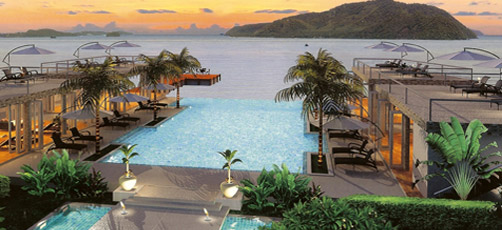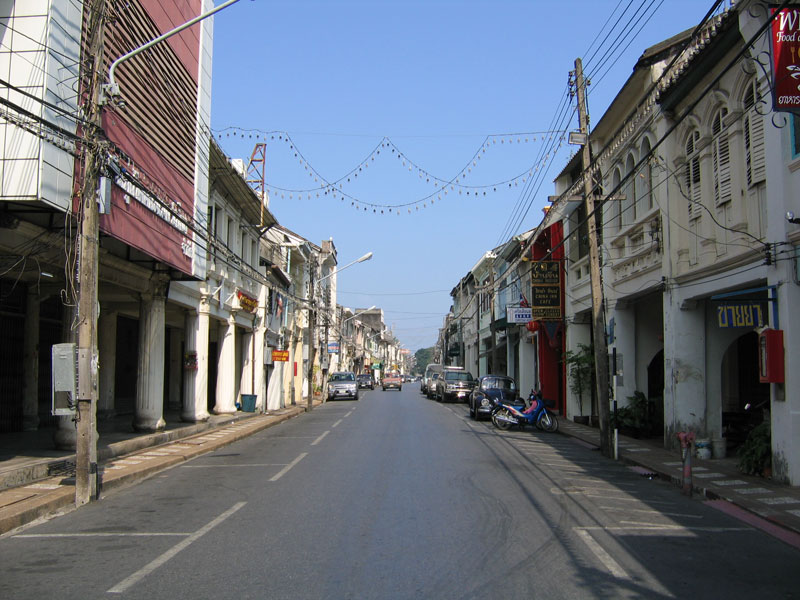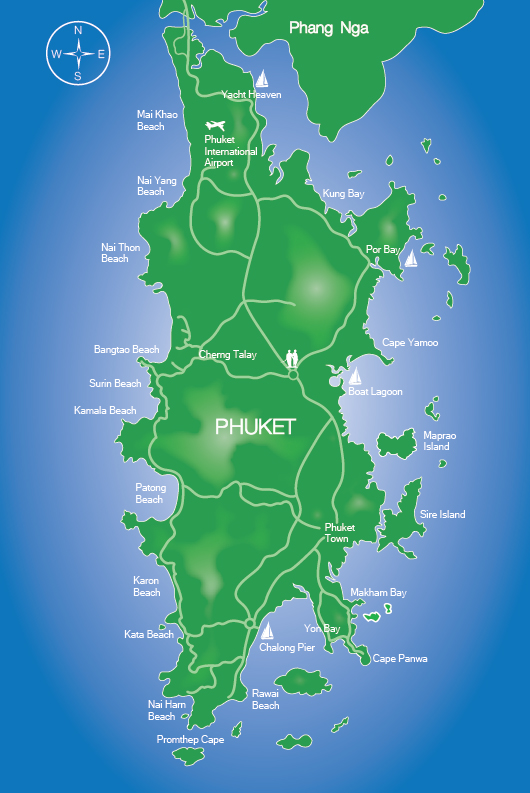
Phuket Location Infomation
General InformationHistory Phuket is the modern name for the island, and a variation on the older spelling ( a Thai 'T' has been substituted for a Thai 'J' in the Thai language spelling of the word ) which evidence shows was itself an exact translation of the word 'manikram', used by Tamil visitors from India as long ago as 1025 A.D.(B.E. 1568). It means 'Crystal (or jewel -like) City.' Because Phuket was a well-known stop among sailor in ancient remains, maps, and texts, the oldest of which is Ptolemy 's dating from the early 3rd century A.D., where it states that in traveling from Suwanapoom, (the 'Golden Land' : identified as the Southeast Asian Peninsula) down to the Malay Peninsula, one passes 'Cape Junk Ceylon', which is a name often seen on old maps applied to Phuket.
There are also references in Thai history to Phuket being a part of the Shivite Kingdom of the Malay Archipelago. Later, from the period of the Sri Vichai Empire to that of Siritam Nakorn, Phuket was known as "The Town of TakuaThalang" being number 1 1 in a group of 12 towns that took as their badge the sign of the dog. Phuket was associated with Takua Pa until the age of Sukothai. During the Ayuttaya period, the Dutch arrived and built storehouses to use in the tin trade. Thus the northern, and central parts of the island were governed by Thais, and southern and western portions were where foreigners came to buy tin ore. During the beginning of the Rattanakosin, that is the present period (c. 1780), the Burmese King brought his armies to attack various cities in Thailand, and came constantly to attack Thalang in the south. At that time the governor had recently passed away. Khunying Jan, the governor's wife and Khun Mock, her younger sister, ollected forces to fight with the Burmese army, and finally defeated them on March 13, 1785 ( B.E. 2328). The King Rama I raciously bestowed upon Khunying Jan the honorific title, Thao Thep Krasattri, and upon, Khun Mock, Thao Sri Sunthorn. Afterward Phuket grew and prospered through the mining and sale of tin. Location Phuket is located on the west coast, in the southern part of Thailand. This largest island of Thailand, which is surrounded by other 32 islands, has total area 570 square kilometres. Phuket has it greatest breadth of 21.3 kilometres it greatest length of 48.7 kilometres, the province is bordered as follows : On the north : is Pahk Prah Channel; Phang - nga Province is connected to Phuket by two bridges in the same area, Sarasin Bridge and Thao Thep Krasattri Bridge. On the south : lies the Andaman Sea. On the west: lies the Andaman Sea. On the east : is the Bay of Phang - nga. Geography Phuket is broken by mountains and valleys throughout mainly from a north - south range . running down the west coast. This accounts for about 70 percent of the land area. The tallest peak, Mai Tao Sip Song ( 12 Cane Peak) is roughly 529 meters, in Tambon Patong, Kathu District. The other 30 percent of the land mass is flat land located mainly in the central and eastern portions of the island. Sandy beaches and mountains lie on the west; in addition there are small estuaries and lagoons, including Klong Bang Yai, Klong Ta Jeen, Klong Ta Rua, and Klong Bang Rong. Weather Phuket's weather is typical of its location near in an area influenced by monsoon winds: warm, humid, but pleasant all year long. There are only two seasons: the rainy season, from May to November, during the southwest monsoon, and the hot season, from December to April, when the monsoon winds blow from the northeast. March has the highest average temperature, 33.4 c, and the lowest average temperatures are experienced early mornings in January, when the thermometer fails to 22 c. Population The total population in January 1995 was199,847. Most are Thai Buddhists of ethnic Chinese blood. In addition there are Thai Muslims, Sihks, Christians, and a small group called 'Thai Mai' (new Thais) but better known as' Chaolay' or 'Sea Gypsies'. Government Phuket government is divided into 3 districts ( called 'Amphur')
|


